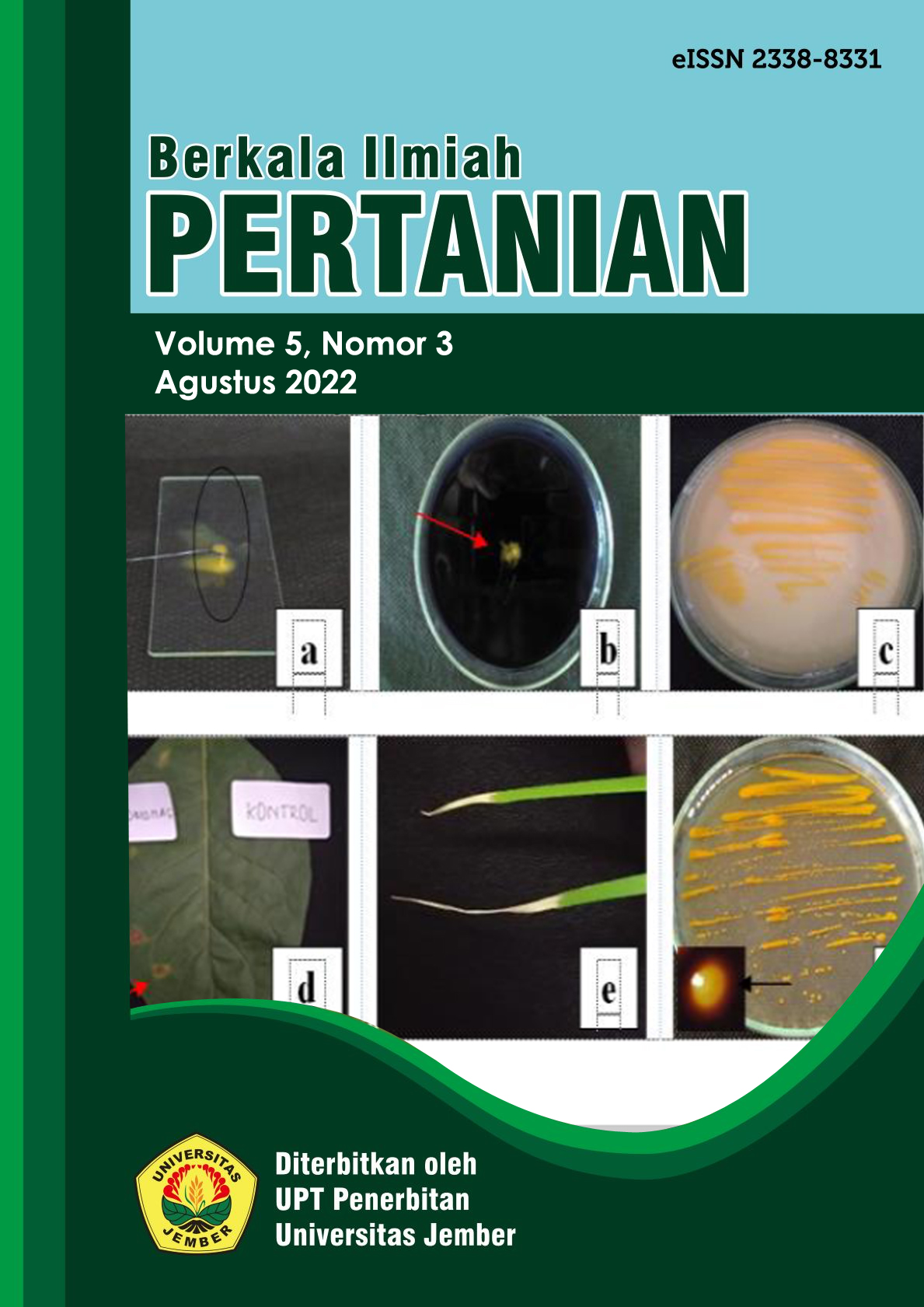The Effect of Chitosan Concentration on Growth Dendrobium sonia’s Orchid
Abstract
Dendrobium orchid is an ornamental plant that has high economic value. The beauty of orchids is considered unique because it has the shape and characteristics of each so much in demand by the public. Based on market analysis the community's interest was dominated by Dendrobium orchid types . The percentage of Desndrobium orchid enthusiasts reached 34% and is the highest percentage compared to other orchid types . The availability of orchid seedlings in Indonesia is still being disrupted. In vitro techniques become breeding techniques that are often used in orchid propagation. Acclimatization is one of the important things in the in vitro technique . Differences in environmental conditions at the acclimatization stage can cause plantlets to over-transpire and interfere with nutrient absorption. Chitosan as a natural organic material is a simple derivative of chitin that can function as a biofertilizer and bioimmuner.Each unit of experiment was repeated 5 times. The parameters observed were leaf width (cm), leaf length (cm), root length (cm), and number of roots. The data obtained were analyzed using the analysis of varians. The results are shown in the study have demonstrated the effect of administration of chitosan on plant orchid Dendrobium sonia at the acclimatization stage.Treatment with a concentration of 3 ppm has a significant effect in increasing plant growth parameters.
Authors who publish with this journal agree to the following terms:
1.Authors retain copyright and grant the journal right of first publication with the work simultaneously licensed under a Creative Commons Attribution-NonCommercial 4.0 International License that allows others to share the work with an acknowledgement of the work's authorship and initial publication in this journal.
2.Authors are able to enter into separate, additional contractual arrangements for the non-exclusive distribution of the journal's published version of the work (e.g., post it to an institutional repository or publish it in a book), with an acknowledgement of its initial publication in this journal.
3.Authors are permitted and encouraged to post their work online (e.g., in institutional repositories or on their website) prior to and during the submission process, as it can lead to productive exchanges, as well as earlier and greater citation of published work (See The Effect of Open Access).

















